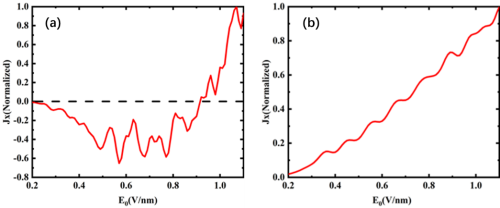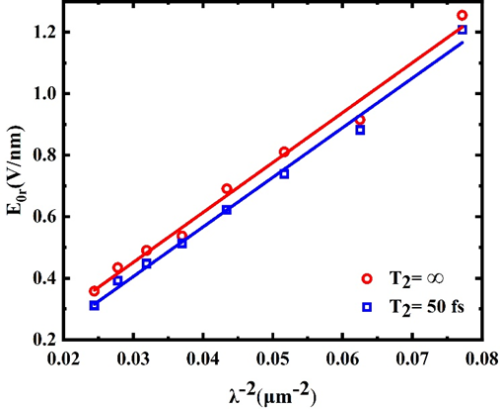A research group from Shanghai Institute of Optics and Fine Mechanics (SIOM) of Chinese Academy of Sciences (CAS) has made a progress in realizing the reversal of residual current in monolayer graphene irradiated by a circularly polarized laser. The research paper has been published in Optics Express on September 28, 2022.
In recent years, femtosecond ultrafast laser-driven effects have received extensive attention to explore coherent control of electron trajectories during laser-solid interactions, making it possible to manipulate dynamic processes in sub-optical-cycle time scales. Graphene, with its properties of weak screening, high damage threshold, and ultrafast optical response, is a promising platform for achieving femtosecond ultrafast laser-controlled electron motion.
The authors investigated the residual current generated by a circularly polarized few-cycle laser driving monolayer graphene by numerically solving the time-dependent Schrodinger equation and the semiconductor Bloch equation, respectively. The results show that for a two-cycle circularly polarized laser, the residual current direction can be reversed at a certain laser peak amplitude by choosing a suitable laser wavelength, as shown in Fig. 1(a). The occurrence of direction reversal comes from the inter-optical-cycle interference, which can be checked via artificially shortening the laser pulse duration to single-cycle (Fig. 1(b)) where the current reversal phenomenon disappears. In addition, the research also discloses an interesting law that the reversal threshold amplitude is directly proportional to the inverse square of laser wavelength in a broad frequency range, whose slope is related to the ratio of ponderomotive energy to photon energy.
The whole study reflects the controllable properties of electron motion in two-dimensional reciprocal space, which is a guideline for realizing ultrafast optoelectronic integration applications.

Fig. 1 Residual current versus laser peak amplitude when wavelength is 4μm and pulse duration are (a) 26fs and (b)13fs, respectively. (Image by SIOM)

Fig. 2 Relationship between peak amplitude threshold and wavelength in a range of 3.6-6.4 μm for different dephasing times T2. (Image by SIOM)
Contact:
WU Xiufeng
General Administrative Office
Shanghai Institute of Optics and Fine Mechanics, CAS
Email: xfwu@siom.ac.cn
Web: http://english.siom.cas.cn/